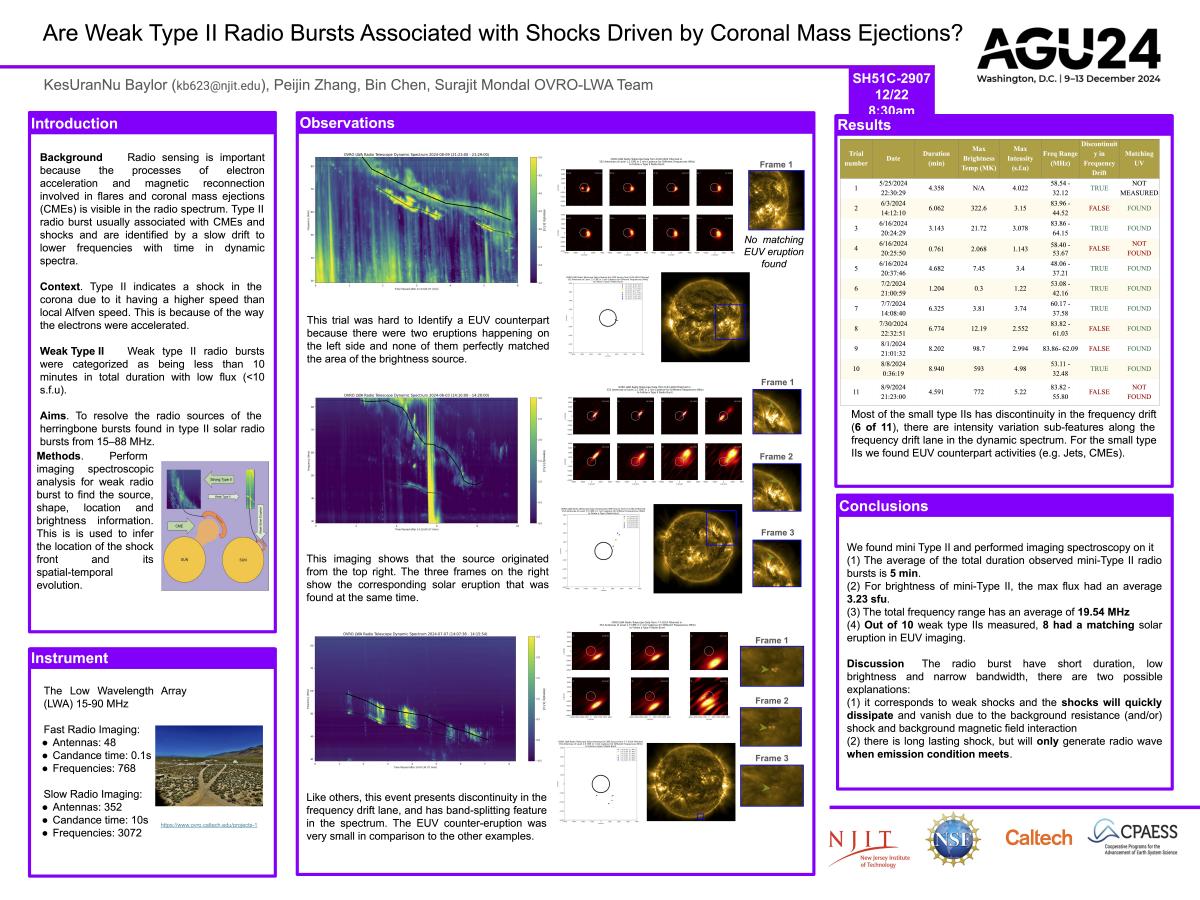| Title | Are Weak Type II Radio Bursts Associated with Shocks Driven by Coronal Mass Ejections? |
| Publication Type | Conference Proceedings |
| Year of Conference | 2025 |
| Authors | Baylor, KUN, Zhan, P, Chen, B |
| Conference Name | HamSCI Workshop 2025 |
| Date Published | 03/2025 |
| Publisher | HamSCI |
| Conference Location | Newark, NJ |
| Abstract | Type II radio bursts are a type of slow-drifting solar radio bursts, usually understood as radio signatures from shocks driven by coronal mass ejections (CMEs). Most previous studies on type II radio burst have focused on strong and bright type IIs, which, when imaged, have been often found to be associated with CME-driven shocks, although a few exceptions have also been reported. It remains an outstanding question whether such an association also holds for very weak type II radio bursts. Taking advantage of the imaging spectroscopy capabilities of the Owens Valley Radio Observatory’s Long Wavelength Array (OVRO-LWA) with an extremely high sensitivity, we identified several weaker type II radio burst events in 15–88 MHz, and then analyzed them using radio interferometric imaging as a function of time and frequency. Weak type II radio bursts were categorized as being less than 10 minutes in total duration with low flux (<10 s.f.u). We located the radio emission source and characterized their shape, brightness, and spatial-temporal variation. Then, using white light and multi-band extreme ultraviolet imaging observations, we tracked their possible solar drivers. We found that some weak type II radio burst events were not associated with a typical white light CME, but with a small scale coronal disturbance within a coronal streamer. For other type IIs, we could not find any visible activity from EUV and white light. All weak type IIs do not show a clear shock front counterpart. We discuss implications of our findings in understanding the formation of type II radio bursts. |
| Refereed Designation | Non-Refereed |
| Full Text |

